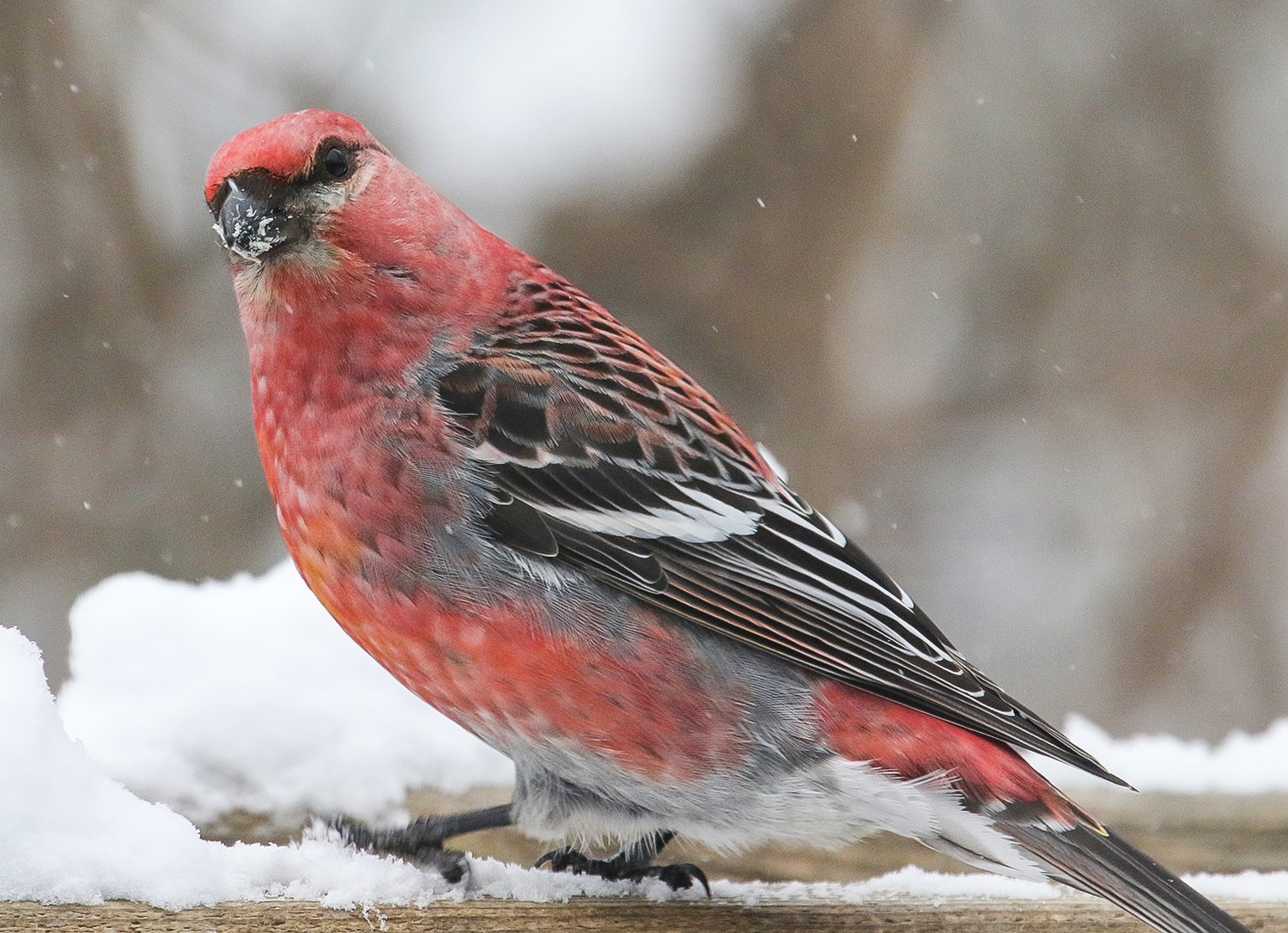Support the Timberjay by making a donation.
Grosbeaks on the wing
The sudden disappearance of a favorite feeder bird is right on schedule
Where did the pine grosbeaks go so suddenly?That’s a question I get a lot this time of year. Of all the common feeder birds here in the North Country, few if any are as regular in their habits …
This item is available in full to subscribers.
Attention subscribers
To continue reading, you will need to either log in to your subscriber account, or purchase a new subscription.
If you are a current print subscriber, you can set up a free website account and connect your subscription to it by clicking here.
If you are a digital subscriber with an active, online-only subscription then you already have an account here. Just reset your password if you've not yet logged in to your account on this new site.
Otherwise, click here to view your options for subscribing.
Please log in to continue |
Grosbeaks on the wing
The sudden disappearance of a favorite feeder bird is right on schedule
Where did the pine grosbeaks go so suddenly?
That’s a question I get a lot this time of year. Of all the common feeder birds here in the North Country, few if any are as regular in their habits as the pine grosbeaks, the largest of our finches. Every year, in the first week of March, the male pine grosbeaks start disappearing and within just a few days, they’ve vanished. The females and immature male grosbeaks hang back a bit longer, a week to ten days in most cases, but even they are typically gone by right around March 15.
As of early this week, we were down to our last three or four stragglers.
The weather seems to make little difference. In a mild March or a cold and snowy one, the pine grosbeak’s internal calendar (which is set mostly by daylength) works the same, and by the time we’re setting our clocks forward, the pine grosbeaks are thinking spring as well. The breeding hormones kick in first among the male grosbeaks, which is typical of most birds. The males are the chief defenders of breeding territories so they depart a week or so early to get territories established before the arrival of the females.
I suspect the disappearance of pine grosbeaks was more noticeable to folks this year since they were so abundant at many feeders for the past few months. It’s actually been an exceptionally good winter in our area for most finches, which include pine and evening grosbeaks, pine siskins, goldfinches, and redpolls. We had at least two dozen pine grosbeaks every morning at our feeders this winter, and they were joined daily by nearly as many evening grosbeaks. I have heard many similar reports from around the area. While it was a good year for pine grosbeaks, it was probably the best year in a quarter century for evening grosbeaks, which have been a species of concern for a more than a decade. I know we went through twice as much sunflower seed as we do in a typical winter. Feeding nearly 50 grosbeaks will empty a 40-pound bag of sunflower seeds in about ten days to two weeks.
But now, they’ve mostly vanished, although they haven’t gone far. The breeding range of the pine grosbeak begins just north of the border and ranges up nearly to the tree line. Pine grosbeaks have proven to be highly successful as a species and are one of only a few birds that are found in boreal forests around the world, with a range that extends throughout northern North America, temperate portions of Siberia and northern Russia, all the way to Scandinavia. Only a few other finches, like redpolls and crossbills, have such vast ranges.
While we might think of pine grosbeaks as primarily seed eaters, since they readily devour sunflower seeds at our feeders, they actually eat more fruit than anything. They’re partial to mountain ash berries and crab apples, but they also eat tree buds and even conifer needles. All this vegetation can be difficult for their nestlings to digest, so pine grosbeaks feed their young a pre-digested paste of vegetation and insects, which they store in pouches in the lower part of their jaw and regurgitate once back at their nest. The females do all the egg incubation although males are known to feed the females while on the nest.
Pine grosbeaks are known to be quite tame and I know one of our regular readers, Steve Wilson, formerly of Tower, now an Isabella resident, was able to feed some of them from his hand this winter. I’ll have to try that next winter.
While our pine grosbeaks may be gone for the summer, they’ll be back soon enough. I start listening for their sweet warbling whistle in the woods right around mid-October.






